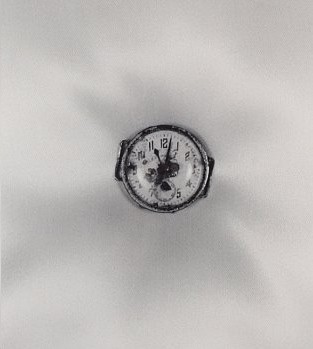The Masked Portrait
11 Jan - 09 Feb 2008
Marianne Boesky Gallery is pleased to announce the next exhibition, titled "The Masked Portrait," dealing with aspects of Japanese contemporary art from 1949 to the present, curated by Midori Nishizawa. With works by thirty artists, this semi-survey exhibition provides a multi-faceted dialogue between the different periods and developments, exploring the inner depths of the creative dynamics of post-war Japanese art.
At 11:02am on August 9, 1945, the second atom bomb detonated on Nagasaki, violently stopping the hands of a now famous wristwatch. Three days earlier Hiroshima had suffered an equal blow. Japan was instantaneously forced into a new reality, necessitating painful rebirth of a culture and society. Post-war Japan endured rapid and successive changes, remaining rigorous and hopeful with the underlying notion that the eternal resides in the immaterial, meanwhile continually appropriating, cultivating and assimilating the western cultural barrage.
The exhibition begins with a Shoji Ueda photograph from 1949, Father, Mother and Children, where hints of early westernization are visible though still suggesting a seemingly innocent time represented by a solid, organized yet distant family structure. Twelve bells chime and resonate throughout the gallery in Work (Bell) by Gutai Art Association member Atsuko Tanaka who is most known for her seminal work Electric Dress (1956), where she draped illuminated light bulbs and a tangle of wires over her body from head to toe. Other key representative works from the avant-garde Gutai Art Association, founded in 1954, are on view. The radical, innovative workings of the group, with the founder Jiro Yoshihara's mantra "Do not imitate others, make what nobody knows," are represented by artists Akira Kanayama who created paintings from self-made machines and Kazuo Shiraga who painted with his feet. Included in the exhibition are documentary photographs displaying several happenings staged by the Gutai Art Association from 1954 through 1958 by Saburo Murakami, Sadamasa Motonaga, Kazuo Shiraga and Atsuko Tanaka.
The volatile 1960's marked a period of unprecedented economic growth in Japan and brought a conceptual spirit of Anti-art and action, which swept the younger generation of artists who were activated by increasing self-destructive and aggressive methods of art making. Key works by Jiro Takamatsu, Genpei Akasegawa and Natsuyuki Nakanishi recount the period of 1963-64 when the three artists formed the group called the Hi Red Center. They conducted carefully orchestrated, nonsensical, suggestively aggressive performances in public locations such as the street (Cleaning Event, 1964) and on buildings roofs (Dropping Event, 1964). Photographer Minoru Hirata documented many of these "actions" where the group's deep questioning of how art and life fit into society were captured. Yayoi Kusama's notorious efforts are represented by a work titled Compulsion Furniture (1966/1993), and Tadanori Yokoo's legendary graphic silkscreens reveal unrestrained Japanese pop imagery that speak of the subversive author Yukio Mishima in An Aesthetic of the End (1968), the artist himself in Tadanori Yokoo (1968) and the underground theater group Jyokyo Gekijyo represented in Koshimaki-Osen (Osen and the Flannel Belt), "Situation Theater" (1966). Photographers Shomei Tomatsu and Eikoh Hosoe's careers were propelled during this rebellious time, marked by their respective style of bold framing, high contrast and blurred images that broke the confines of traditional documentary photography, as did Daido Moriyama's career with his infamous image Stray Dog, Misawa Aomori (1971).
Nobuyoshi Araki's imagery traverses the 1970's only to reveal the excesses of the 1980's. Two images from his Girl's World series, both from 1984, are presented here as ostentatious accounts of a self-referential and voyeuristic era. What was once simply called westernization in reference to Japan is now specifically called Americanization. Yasumasa Morimura's Marilyn (1996), a self-portrait of the artist as Marilyn Monroe, presents a moment of blatant pop icon appropriation. The exhibition concludes with an array of recent work by Atshushi Fukui, Yuichi Higashionna, Tetsutaro Kamatani, Hideki Nakazawa, Yoshitomo Nara, Mika Ninagawa, Motohiko Odani, Aya Takano and Sakuji Yoshimoto, whose work as a whole is indicative of the groundbreaking concepts that mark the consequences of the self-criticism of recent times in Japan. Takashi Murakami and ©Kaikaikiki are also presented in this exhibition as the pinnacle of this self-criticism and as such exemplify the merging of pop and kitsch consumerist icons that is now the stereotypical identity of Japanese art. Under a mask of seemingly innocent and adolescent appearances a much more complex and multi-tiered face of Japan will continue to reveal itself.

